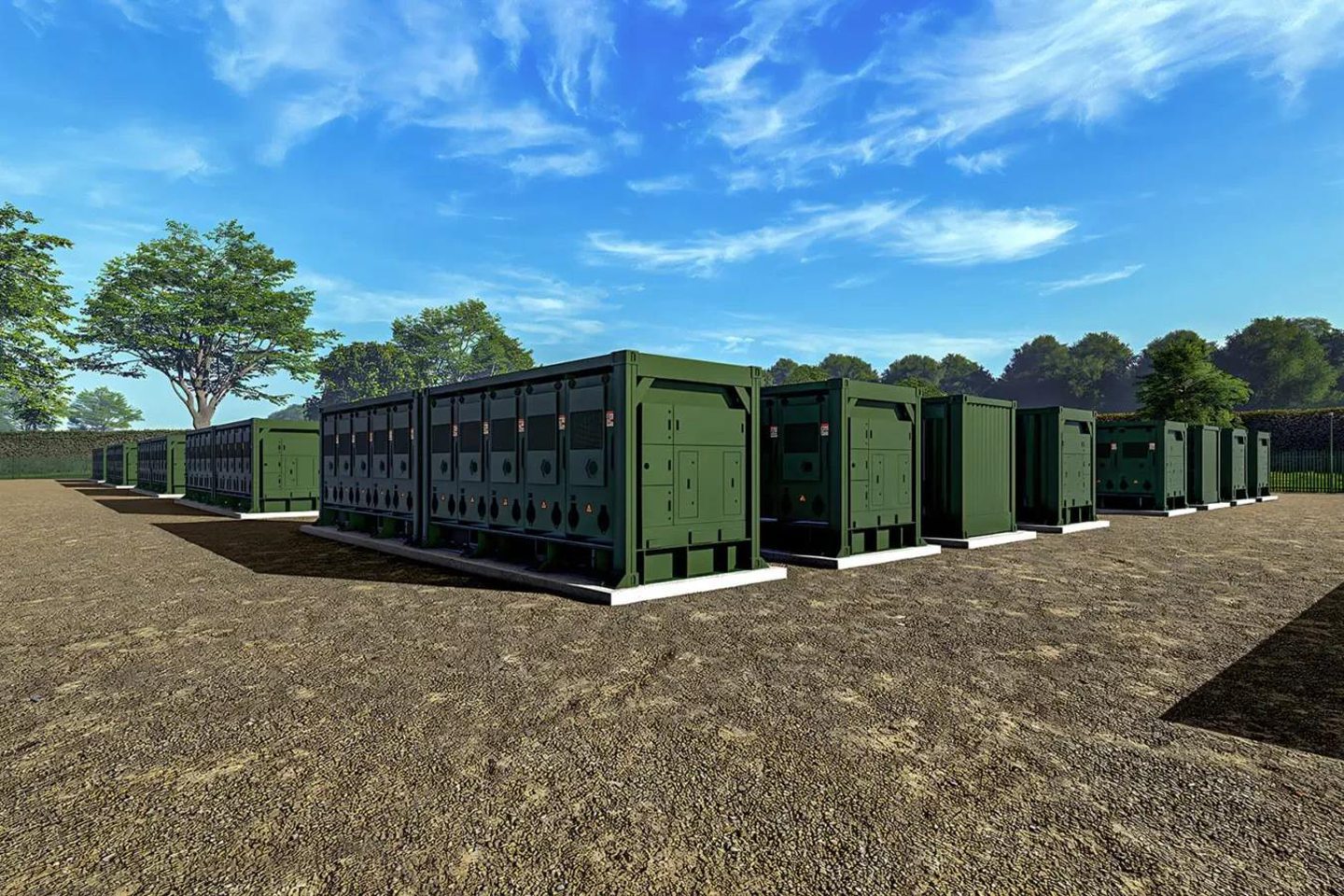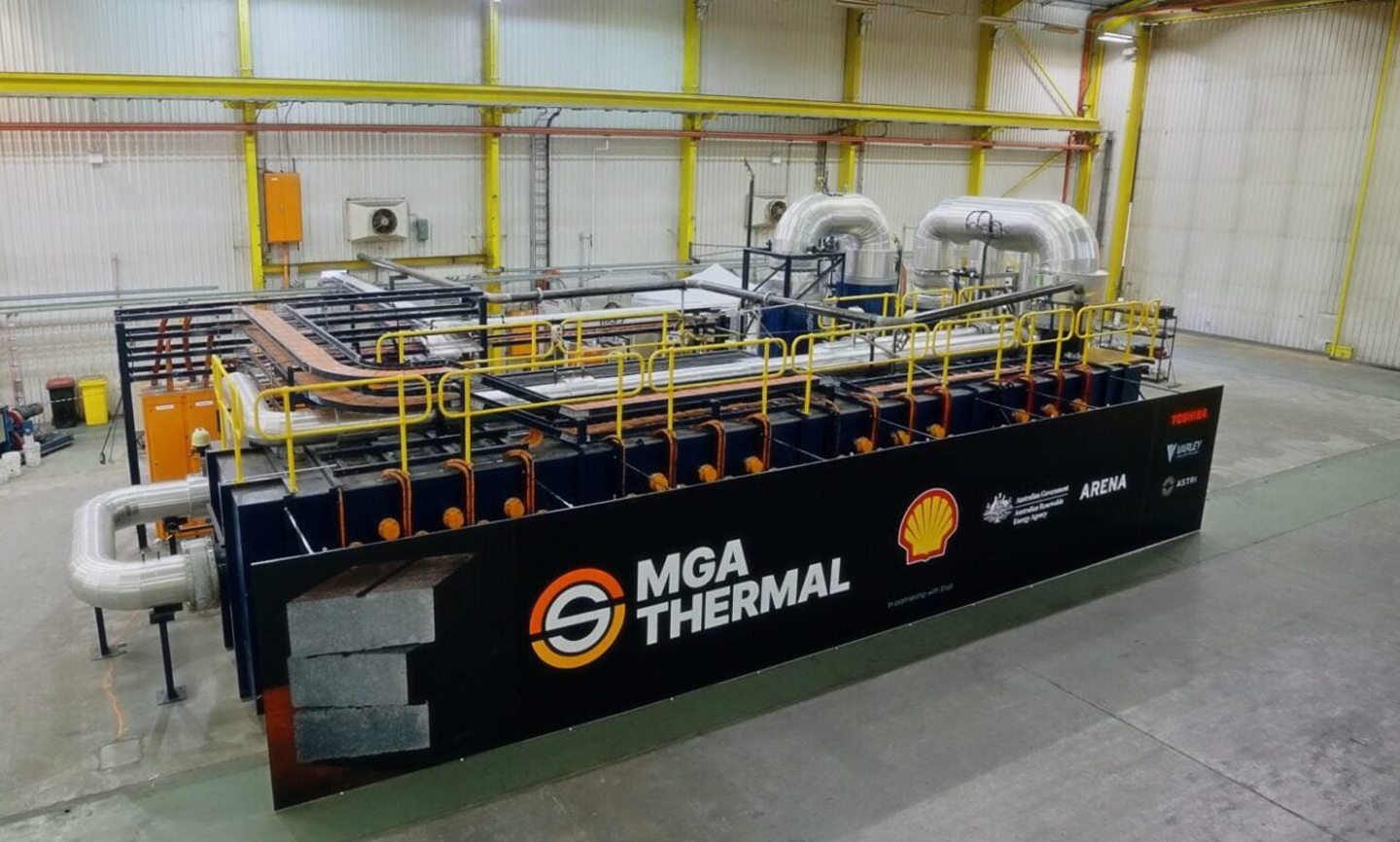In this week’s Charging Forward, Drax will not bid its Cruachan II pumped storage hydro project into the UK government’s long duration energy storage scheme.
Elsewhere, renewable energy developer Elmya has launched plans for a battery energy storage system (BESS) project at the Kelburn Estate in North Ayrshire.
This week’s energy storage headlines:
- Drax pulls Cruachan II bid from LDES cap and floor
- Elmya launches 400 MW Kelburn Estate BESS
- Reform warns off battery storage developers after local election wins
- Grenergy Renewables 20 MW Peak District BESS approved
- Macquarie takes over UK solar and BESS developer Island Green Power
- Scottish government approves Ladyfield Renewable Energy Park
- Gresham House approved for 300 MW Mossmorran BESS
- Masdar Arlington Energy 100 MW Upton Lane BESS approved
- International energy storage news: Australian startup MGA Thermal claims “world’s first industrial steam heat energy storage demonstrator”
Drax pulls Cruachan II cap and floor bid
UK power generation firm Drax Group has said it will not enter its £500 million Cruachan II pumped storage hydro project into a government support scheme.
The UK government launched the long duration energy storage (LDES) cap and floor scheme in 2024, aiming to accelerate the development of LDES projects.
The scheme is targeted at LDES technologies including pumped hydro, liquid air energy storage, compressed air energy storage and flow batteries.

But Drax said due to a “significant rise in the capital costs” associated with its Cruachan II expansion in Scotland, the company will not enter the cap and floor.
‘The projected cost of Cruachan II has risen over the past two years, whilst at the same time, the recoverability of all capital invested in the project remains unclear,” the company said in a trading update.
“Therefore, Drax will not participate in this first phase of the cap and floor scheme but will retain the option for potential future development, subject to an appropriate balance of risk and return.”
Drax said it is “continuing to engage” with the UK government “about a policy environment which could sufficiently de-risk and incentivise investment” in pumped hydro projects.
The company said it sees a “strong future” for its hydropower assets, including the existing Cruachan power station and its Glenlee site in Galloway.
The withdrawal of a major UK pumped storage hydro project from the cap and floor process comes despite UK battery storage developers strongly criticising the scheme over a perceived “bias” against lithium-ion battery projects.
Elmya launches 400 MW Kelburn Estate BESS
Renewable energy developer Elmya has unveiled plans for a 400 MW BESS project on the grounds of the Kelburn Estate near Largs in North Ayrshire.
Elmya expects the investment will enable the estate owners to invest in its future and provide employment opportunities for the local region.
Built in the 13th century, the castle on the Kelburn Estate is believed to be the oldest in Scotland to have been continuously inhabited by the same family.
David Boyle, of Kelburn Estate, said the BESS project could provide revenues to help “rejuvenate the grounds and explore new opportunities to open up the site”.
“Not only does it help the estate contribute to Scotland’s fight against climate change, it will also provide more opportunities for us to grow and develop our offering to the local community,” Boyle said.
Elmya senior development manager Stephen Milburn said the development will “accelerate Scotland’s journey towards net zero and provide an economic boost to the local area”.
Milburn also called for local community feedback on the project.
“We look forward to hearing everyone’s thoughts and addressing any questions on the project,” he said.
Reform warns energy storage firms after election wins
Reform UK deputy leader Richard Tice has declared the party will use its control of council authorities to stymie battery storage development.
In last week’s local elections in England, Reform gained control of 10 council areas alongside the mayoral positions in Hull and East Yorkshire and Greater Lincolnshire.
Following the election, Tice took to social media to warn against renewable energy development in the regions which backed Reform.
“If you are thinking of investing in solar farms, battery storage systems, or trying to build pylons, think again,” the Boston and Skegness MP said.
“We will fight you every step of the way. We will win.”
Reform’s growing electoral support has raised concerns about the way in which the UK political consensus on climate action is fracturing.
Grenergy 20 MW Peak District BESS approved
High Peak Borough Council has approved plans from Grenergy Renewables to build a 20 MW BESS project near the town of Buxton.
According to its website, Grenergy plans to begin construction in the second quarter of 2026, with the site to be operational by the end of the year subject to network upgrades.
 © Supplied by Grenergy Renewables
© Supplied by Grenergy RenewablesThe council only received one public comment during the consultation period, which was supportive of the BESS scheme.
Macquarie takes over Island Green Power
Australian investment group Macquarie Asset Management has taken over the remaining 50% stake in UK-based solar and battery storage developer Island Green Power (IGP).
Macquarie now owns 100% of IGP, after first investing in the London-based company in 2022.
IGP has developed around 2 GW of utility-scale solar and BESS projects across the UK, Spain, Italy, Australian and New Zealand.
In the UK, the firm is developing a 1.3 GW BESS portfolio across five projects, with developments in Aberdeenshire, Devon, Staffordshire and Lincolnshire.
IGP also has one operational BESS project in the form of its 50 MW Little Raith BESS in Fife.
Macquarie is a significant investor in the UK energy market, with operations across solar energy and offshore wind.
The Australian firm owns UK solar developer Cero Generation and offshore wind developer Corio Generation.
Scottish government approves Ladyfield Renewable Energy Park
The Scottish government has approved plans for a wind farm and battery storage project located near Inveraray in Argyll and Bute.
Oxfordshire-based Ridge Clean Energy (RCE) avoided the need for a public inquiry over the Ladyfield Renewable Energy Park after council planners raised no objections.
The project involves installing a 58.5 MW wind farm comprising thirteen turbines at Ladyfield plantation near Glen Aray on the Argyll Estate, alongside a 41.4 MW BESS.
 © Statkraft
© StatkraftThis site is expected to provide power for around 45,000 homes each year.
As part of its community engagement, (RCE) assisted community groups to raise over £244,000 to purchase and restore the historic pier in Inveraray.
Meanwhile, the Scottish government has also approved plans from battery storage developer Gresham House to build a 300 MW BESS in Mossmorran.
The proposed project is located to the north west of the town of Auchtertool, and involves the installation of 256 batteries, 64 inverters and 32 transformers.
Masdar Arlington Energy BESS approved
Masdar Arlington Energy has secured council approval for a 100 MW BESS project in West Yorkshire, despite hundreds of objections from local residents.
Located near the town of Nursling, the Upton Lane BESS project will be operational for around 40 years under the plans.
But local residents raised concerns about the impacts of construction noise and the potential fire risk.
However, the plans were accepted by a planning committee of Test Valley Borough Council on 29 April.
In a background paper, council officers said the site could bring “significant economic, social, and environmental benefits” and outweigh the cost.
According to the Hampshire Chronicle, Cllr Alan Dowden, who spoke in support of the application, said climate change meant alternative energy solutions were needed.
“Some people don’t believe it, people like Trump don’t believe it, but, on the other hand, I don’t believe in what Trump is doing either,” he said.
“Giving planning permissions for solar panels, wind power […], renewable energies and it has to be stored.
“Otherwise, we’re pointlessly producing energy and it’s just wasting energy and we can’t keep using fossil fuels, otherwise, the fires will not be coming from the batteries.”
Masdar Alrington Energy is owned by Emirati renewable energy developer Masdar, after the state-owned firm bought the UK battery storage developer in 2022.
Australia claims industrial steam heat energy storage ‘world first’
MGA Thermal claims it has developed the “world’s first” commercial electro-thermal energy storage system (ETES) capable of dispatching industrial-grade steam from renewable energy.
The Australian start-up has spent 10 years developing the technology, which uses thermal energy storage blocks to store renewable electricity as heat.
The company has developed a proprietary miscibility gap alloy (MGA) technology which it uses to create scalable storage “blocks”.
 © Supplied by MGA Thermal
© Supplied by MGA ThermalThe company has assembled a 5 MWh demonstrator plant, located in Newcastle, using 3,700 of its MGA blocks alongside 500 kW of thermal dispatch power.
MGA Thermal said its demonstrator plant “significantly outperforms conventional sensible heat thermal storage”.
The technology could provide a “viable pathway to 24/7 renewable heat for industries”, MGA said, effectively replacing reliance on carbon-intensive fossil fuels.
MGA Thermal said its demonstration project could provide a “tangible route to net zero industrial operations” with the potential to scale to GWh storage capacities.
Globally, industrial heat accounts for around 25% of energy use and the high heat requirements make many industrial process difficult to decarbonise.
 © Supplied by MGA Thermal
© Supplied by MGA ThermalMGA Thermal co-founder, executive chair and chief scientist Erich Kisi said the demonstration project marks a “pivotal moment” in decarbonising heavy industry.
“The successful operation of this world-first system is a game-changer, proving that consistent, industrial-grade clean steam is not a future aspiration, but a reality today,” Kisi said.
MGA Thermal chief executive Mark Croudace said the company is on track to abate 30 million tonnes of CO2 by 2030 as it scales up operations.
“Our now-operational demonstration plant isn’t just a concept – it’s a commercially viable solution ready for deployment,” Croudace said.
“As we gear up for full-scale commercialisation, our focus is on partnering with forward-thinking industries, both locally and globally, eager to embrace a sustainable future.”
The company received around £600,000 (A$1.26m) in funding for the demonstrator from the Australian Renewable Energy Agency.
Founded in 2019, MGA Thermal has also secured investment from oil giant Shell, New Zealand’s Climate Venture Capital Fund, Varley Holdings and Main Sequence.





















